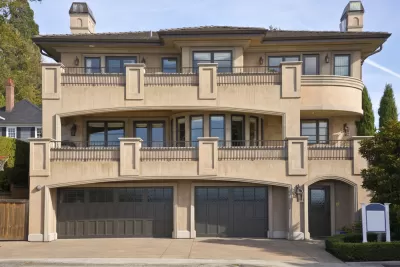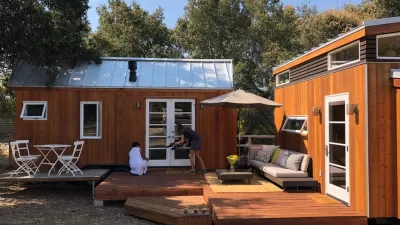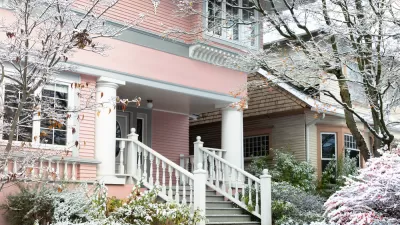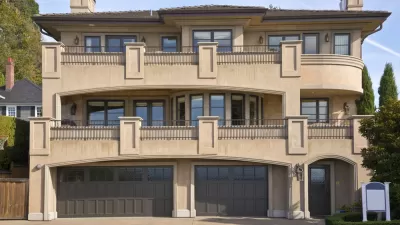One benefit of more accessory dwelling units (ADUs) could be less mansionization of oversized single-family homes.

Sarah Anne Lloyd reports on Seattle's efforts to tweak its ADU laws to make the buildings, also known as mother-in-law units or granny flats, to reduce the prevalence of McMansions.
Legislation that would reform ADU regulations is still taking shape, but some councilmembers are pushing for a version of reform that would reduce floor-area ratio (FAR) as a method to reduce the incentives for building large, bulky mansions on single-family lots.
Lloyd explains:
Single-family zoning in Seattle is currently extremely permissive. While it has height limits (25 to 30 feet), there’s no limit to FAR, as long as the giant home that results is only one home. This is how you get giant, out-of-scale houses in single-family neighborhoods: They’re built to maximize square footage under height limits.
The ADU legislation, in an effort to incentivize both building new homes and keeping older homes around, would set an FAR limit at 0.5 for the main home on a single-family lot, whether the home has ADUs or not.
ADU legislation has been in the works in Seattle for years now, so it might still be some time before the City Council produces a final action. ADUs were intended as a key component of affordability measures recommended by the city's Housing Affordability and Livability committee (HALA) in 2015.
FULL STORY: How ADU legislation could rein in Seattle’s McMansions

Planetizen Federal Action Tracker
A weekly monitor of how Trump’s orders and actions are impacting planners and planning in America.

Chicago’s Ghost Rails
Just beneath the surface of the modern city lie the remnants of its expansive early 20th-century streetcar system.

San Antonio and Austin are Fusing Into one Massive Megaregion
The region spanning the two central Texas cities is growing fast, posing challenges for local infrastructure and water supplies.

Since Zion's Shuttles Went Electric “The Smog is Gone”
Visitors to Zion National Park can enjoy the canyon via the nation’s first fully electric park shuttle system.

Trump Distributing DOT Safety Funds at 1/10 Rate of Biden
Funds for Safe Streets and other transportation safety and equity programs are being held up by administrative reviews and conflicts with the Trump administration’s priorities.

German Cities Subsidize Taxis for Women Amid Wave of Violence
Free or low-cost taxi rides can help women navigate cities more safely, but critics say the programs don't address the root causes of violence against women.
Urban Design for Planners 1: Software Tools
This six-course series explores essential urban design concepts using open source software and equips planners with the tools they need to participate fully in the urban design process.
Planning for Universal Design
Learn the tools for implementing Universal Design in planning regulations.
planning NEXT
Appalachian Highlands Housing Partners
Mpact (founded as Rail~Volution)
City of Camden Redevelopment Agency
City of Astoria
City of Portland
City of Laramie





























